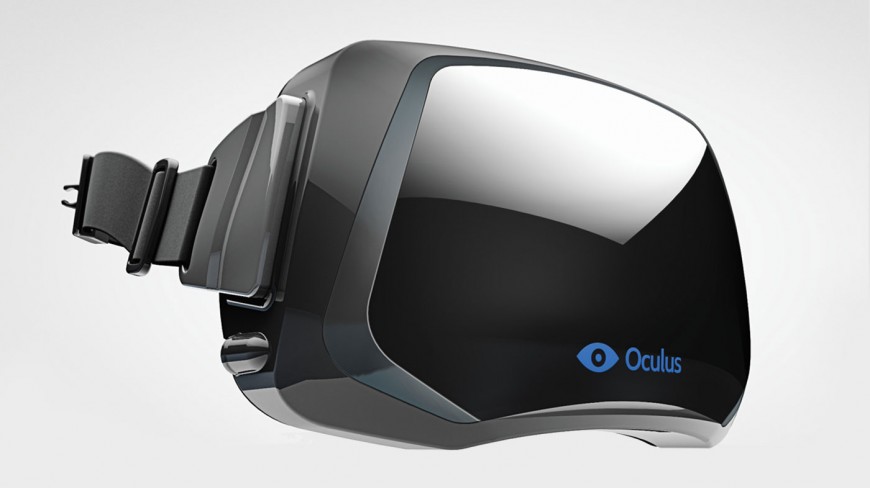
Unless you’ve been living under a rock for the last six months, you’ve probably heard SOMETHING about the coming Virtual Reality (VR) revolution. Between the OculusVR, Sony’s Morpheus, and Samsung’s ‘yet to be named’ entry into the market, there will very shortly be a huge number of VR devices in the public eye. Since it is our job at Helios to stay on top of all of the latest/greatest technology trends to hit, we’ve decided to provide some insights into what we think the impact of VR will be on the marketplace.
Before we do, however, let me provide some insight into our experience in the VR space. We have been dedicating internal resources to R&D with VR experiences for the last year, and have five VR projects launching in the next several months, all utilizing the Oculus Rift DK2. These range from event-based traveling tours for automotive and financial brands to sports marketing efforts at stadiums (including a very high-profile new stadium opening up in our backyard here in San Francisco). These range from brief 60-90 second experiences to immersive, technical gaming experiences involving multiple peripherals and technology tie-ins. During the creation and implementation of these experiences, we have learned a lot about how the VR space is shaping up for the events industry. Following are some of our thoughts.
The Good
If you haven’t seen VR recently, do whatever you can to check it out. It has gone from kitschy, Max Headroom-style old school 8-bit experience to a modern, truly immersive, and incredibly impactful one. I cannot stress enough how big the leap in technology has been and how amazing an experience can be with this platform. While Oculus is currently the leader in the space, Sony and Samsung are certainly going to be major players as the platform evolves. That said, VR has the potential to truly transport participants into another world, one that can either be created from scratch and built in 3D using computer generated imagery, or even a video captured with the latest 360 panoramic camera technology. Regardless of the situation or the brand, we think that VR can provide deeper and more memorable experiences for fans than just about any other medium we’ve seen in the last several years.
The Bad
So of course, if it sounds too good to be true… you know the rest. There are definitely some things to consider when creating a consumer engagement piece. We have been working directly with Oculus to ensure the best consumer experience, and it has been extremely helpful to have them providing insight into some of the experiential elements we’ve created, helping optimize the user flow and interaction. That said, here are a few ‘watch-outs’ for any VR deployment:
- Throughput: This is a wearable technology, one in which users will have to strap a set of goggles on their heads. The time it takes to do so, and to go through the experience, and subsequently remove the equipment will extend beyond that of a STANDARD engagement. This means that each user, even for a short user experience, can take up to five minutes on a round-trip. That means 12 per hour, or 96 over an 8-hour day. That said, scaling multiple units isn’t very expensive, but this is definitely a big limitation.
- Age Requirements: Oculus has not yet released a minimum age requirement. That said, we feel that one could be imminent and that will definitely have an effect on lower age groups ability to enjoy the experience.
- Hygiene: Brand ambassadors will be required to be very active in the cleaning of the display between each user. Germophobes may not want to participate.
- Terms and Conditions: Right now, it’s a little bit of the Wild West with regards to VR. To ensure that all bases are covered, it’s best to have users accepts some terms and conditions about their experience.
You might think that the above issues would prevent some folks from moving forward with Oculus applications for the events and retail space. Well, despite those challenges, the end result is so compelling that they become insignificant. I’m not kidding, it really is that good.
To CG or Not to GG
Another question that is coming up in the development process has been whether to utilize CG, or new camera technology to capture video of a space, with the Oculus as the playback device. Our thoughts are to focus on CG for most projects — it allows for flexibility of experience, creation of specific scenarios, and a much better branding opportunity in general. That said, some experiences can’t be replicated in CG… and thus will be best served by video. We’ll keep you posted on the video options in a future blog post, but suffice it to say that there are also some really exciting opportunities that can utilize that medium — a few of which we’ll be launching shortly!
So overall, as I’m sure you can tell, we’re really excited about the potential of VR. It really can be a superb storytelling medium if used correctly, and it is something that we think is going to be around for a long time. And we’re putting our money where our mouths are by dedicating a lot of resources towards development in the space. So even if you are living under a rock, it won’t be long before you too have experienced the wonder of VR.
